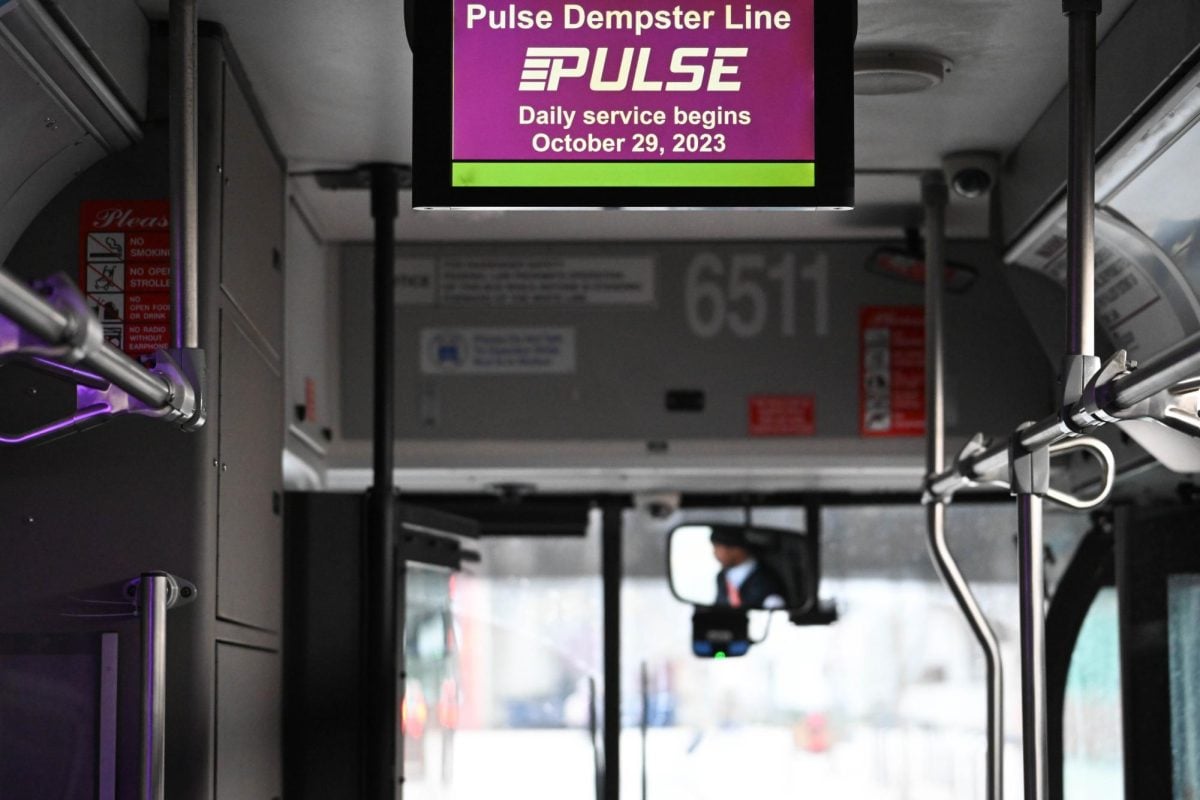Toting suitcases and travel knickknacks, several Northwestern students disembarked a rapid bus traveling from O’Hare International Airport Tuesday at the Davis Street Chicago Transit Authority station in downtown Evanston.
Weinberg freshman Anirudh Rao said he took advantage of the new route, Pace Suburban Buses’ Pulse Dempster Line, for a trip that now takes less than an hour.
“It’s pretty good,” Rao said. “I would definitely say it’s more economically feasible than Uber.”
The rapid bus service, which runs from Evanston to O’Hare and costs $2 with a Ventra card, has boosted ridership on the Dempster Street corridor since its daily debut in late October. As Chicago-area transit continues to face post-COVID-19 pandemic blues, Pace officials said the new service could pave a new path forward for the struggling industry.
“Safety, reliability and frequency are big drivers to people who come to transit in the first place,” Pace spokeswoman Maggie Daly Skogsbakken said.
With fewer stops and traffic signal priority, Pulse offers faster travel times and more frequent buses. It also incorporates some bus rapid transit amenities, like bus stop shelters with raised platforms, but it does not travel on an exclusive lane.
Pulse and the accompanying local Route 250 carried 1,871 passengers on average each weekday in December — a 22.6% increase from the same month in 2022, when only the local service operated.
Newly released numbers from Pace also show hundreds more riders on weekends as compared to 2022. Total monthly ridership grew 21.1% over the same period.
Yet, as demand for transit remains low, the Dempster corridor still carries hundreds fewer than the 2,473 average weekday passengers who rode the local service in December 2019.
Transit agencies must expand beyond commute-based, fixed-route services, as working from home has increased, according to P.S. Sriraj, who directs the University of Illinois Chicago’s Urban Transportation Center. This expansion could include ride-hailing services, which Pace has piloted in some areas, but also additions like the Pulse line.
“I’ve long argued that transit can no longer be a regular train and regular bus,” Sriraj said. “Anything that is a variation of it or departure from it is going to be much needed and should be explored, and the Pulse service is not an exception. It definitely is a new way of presenting public transportation.”
As Pace looks to introduce Pulse service to other corridors in its suburban service area, one task remains for the Dempster line’s completion. Only half of the heated bus shelters are complete, with construction on the remaining sites set for later this year, Skogsbakken said.
A looming budget shortfall for regional transit in 2026 could spell trouble for Pace and other agencies without a state rescue plan. In the meantime, Pulse offers an example of ways to improve service and attract new riders, Sriraj said.
“Pace, for a variety of reasons, because of their size, is able to stay nimble and experiment and explore these new service patterns and service offerings,” he added. “That may be a difficult proposition for something like CTA or Metra.”
Email: shungraves2027@u.northwestern.edu
Twitter: @realShunGraves
Related Stories:
— Evanston Metra riders may see lower fares starting in February
— CTA Holiday Train carries Santa, elves to every ‘L’ station
— Facing multiple headwinds, Pace preps for full debut of rapid bus













